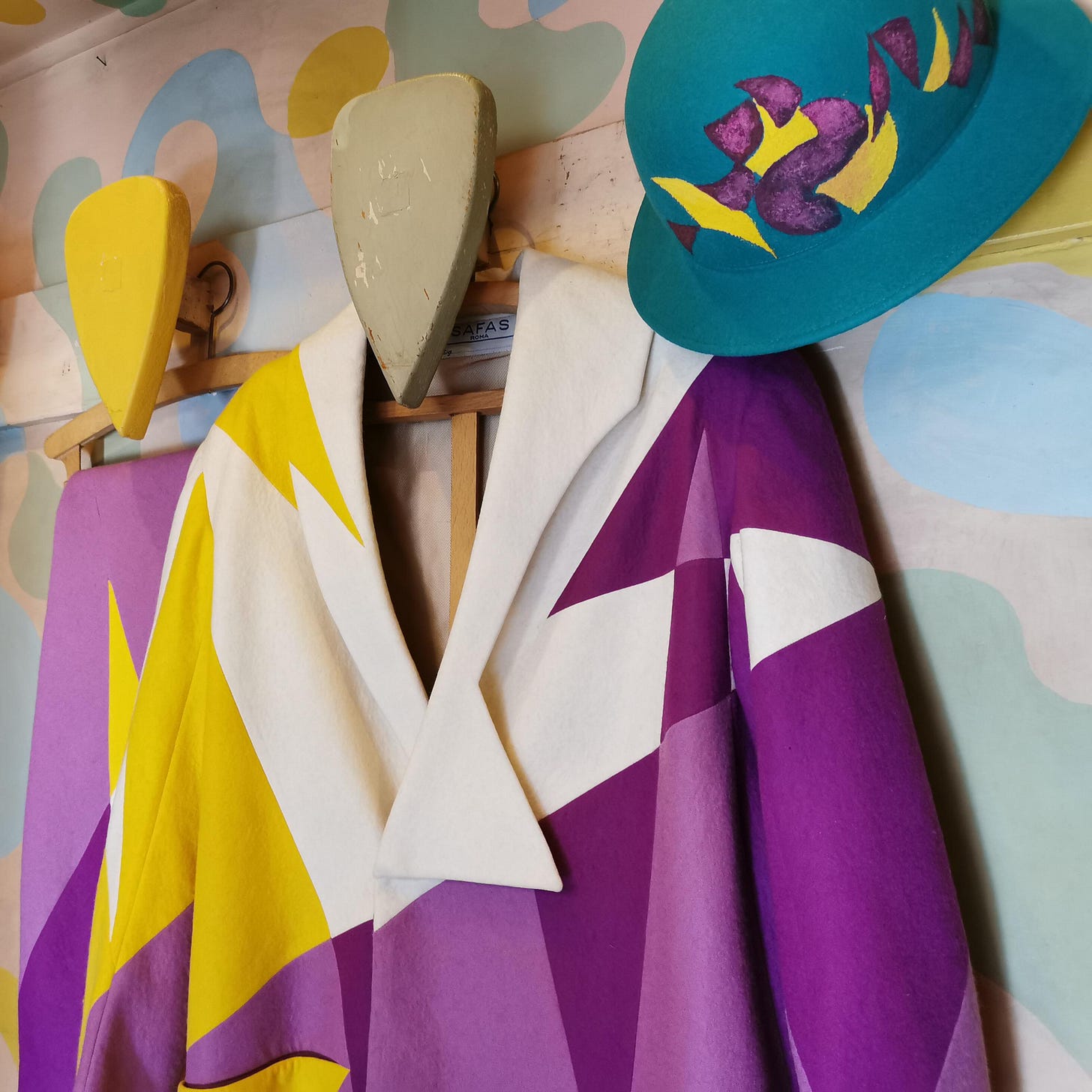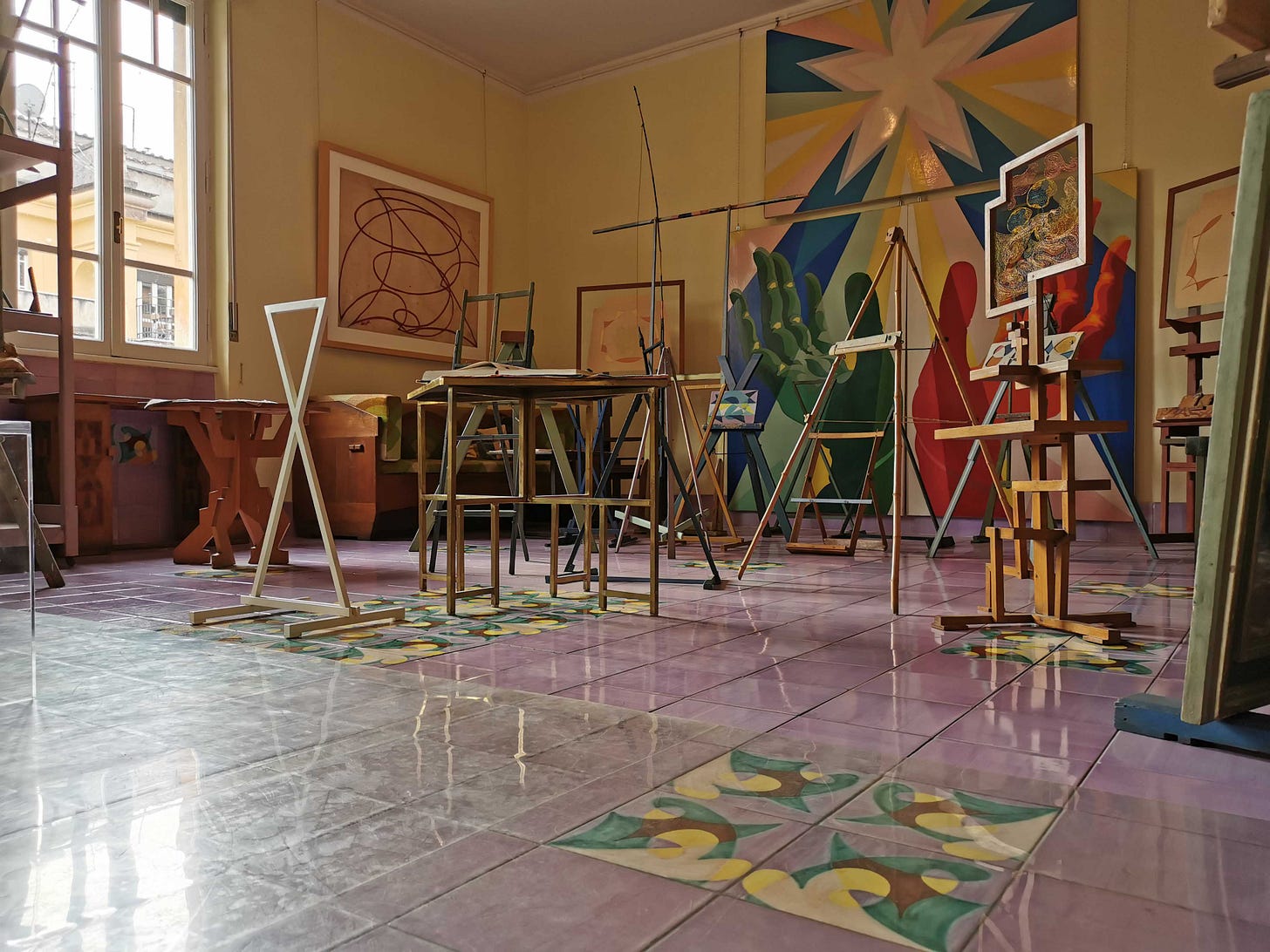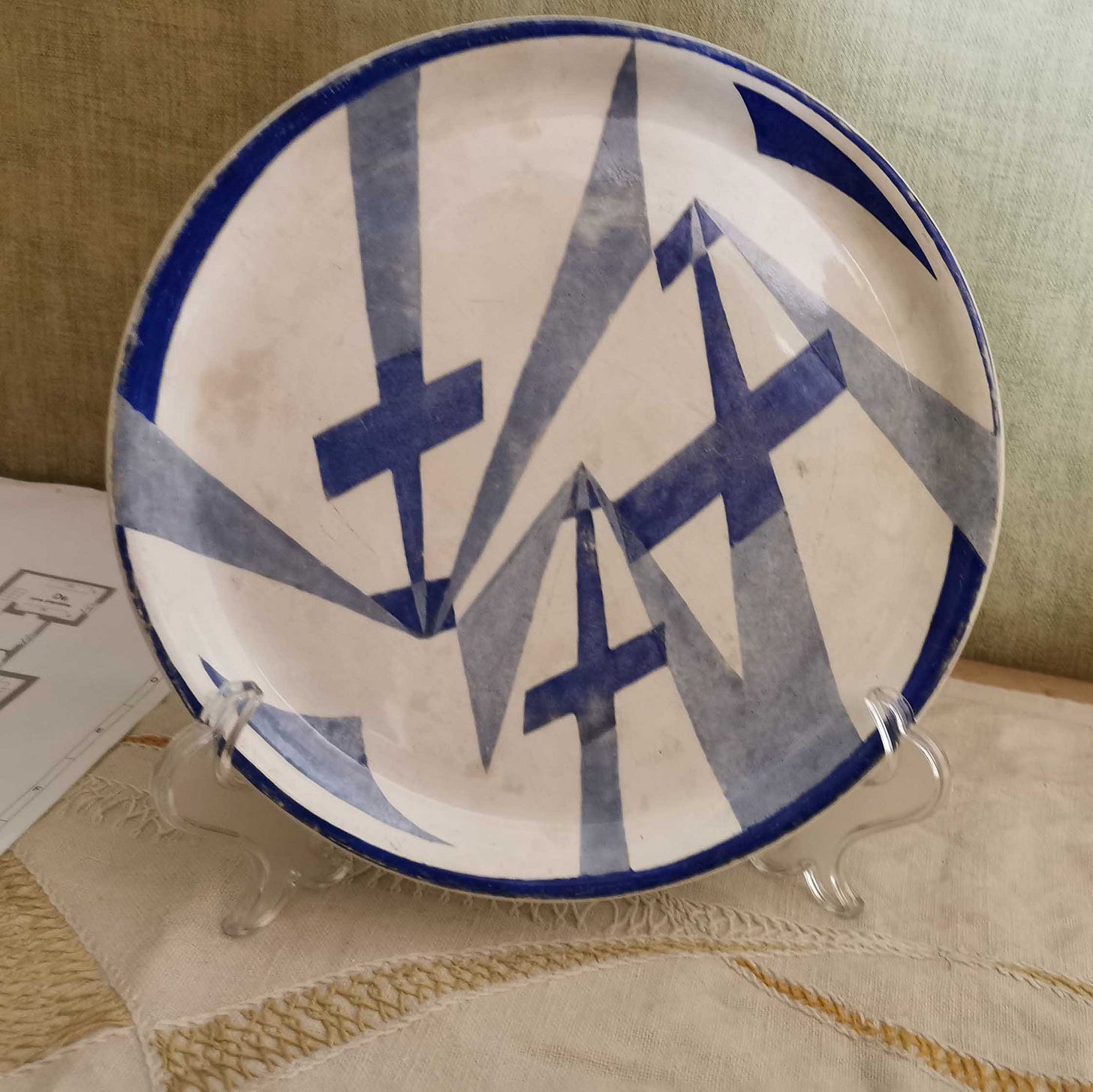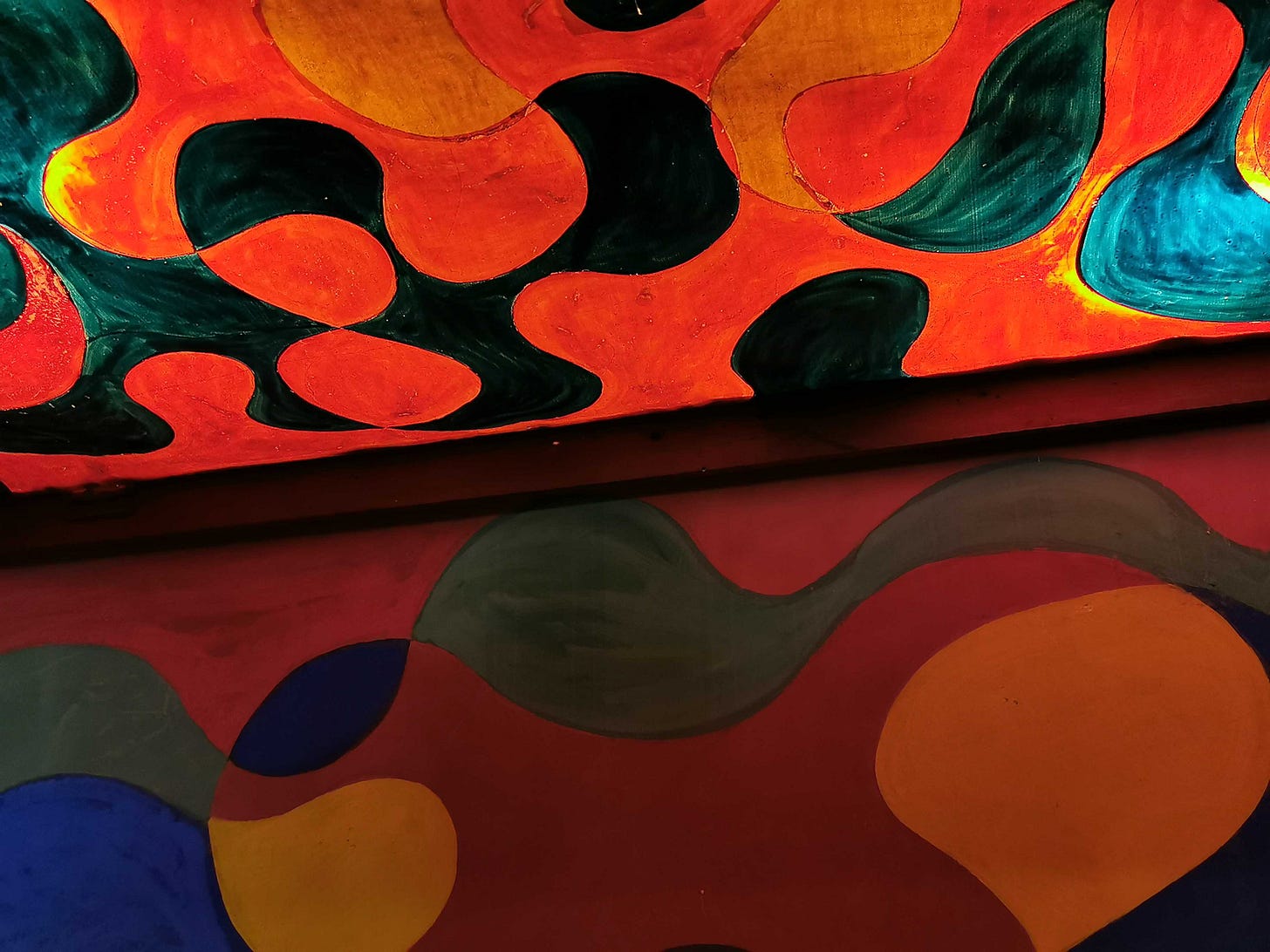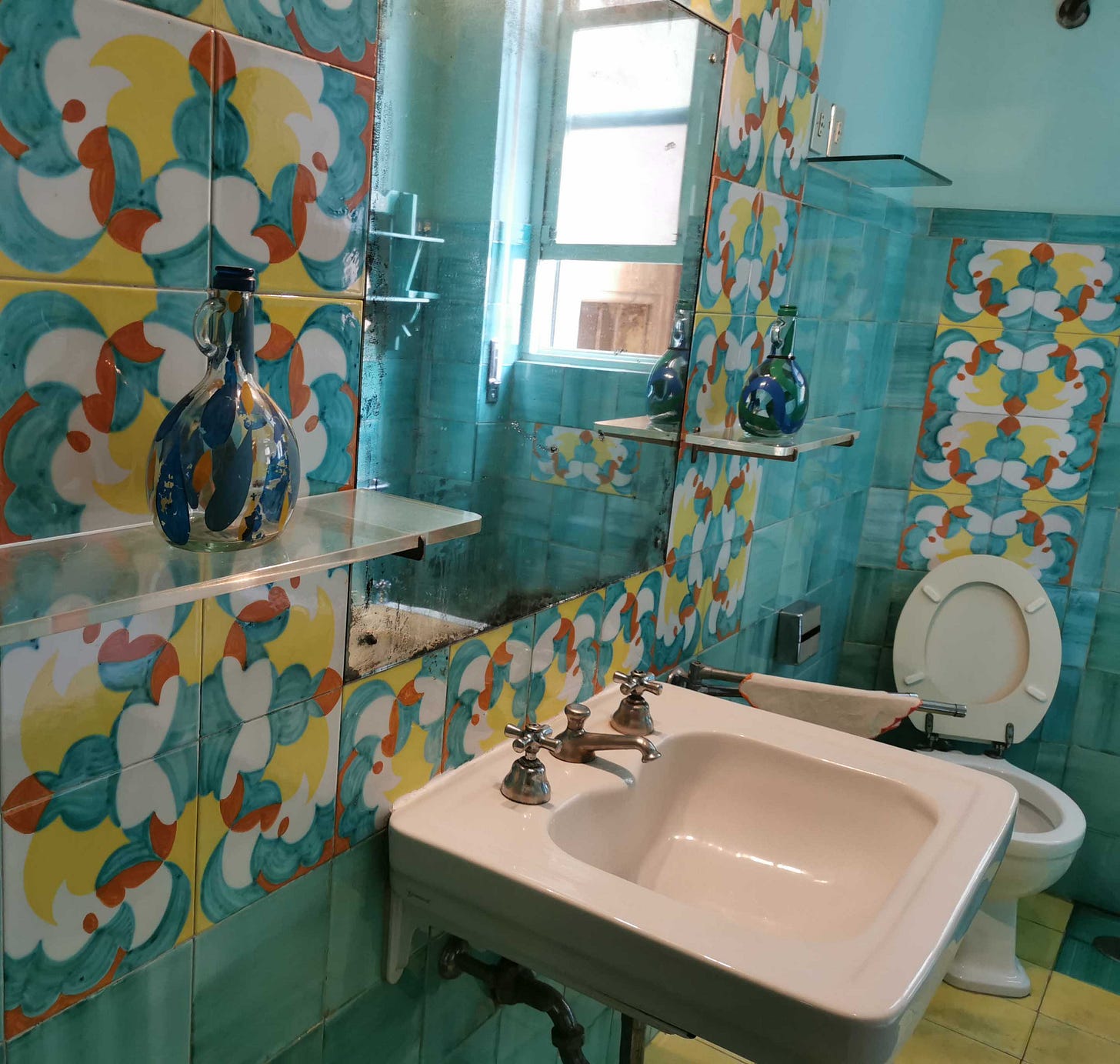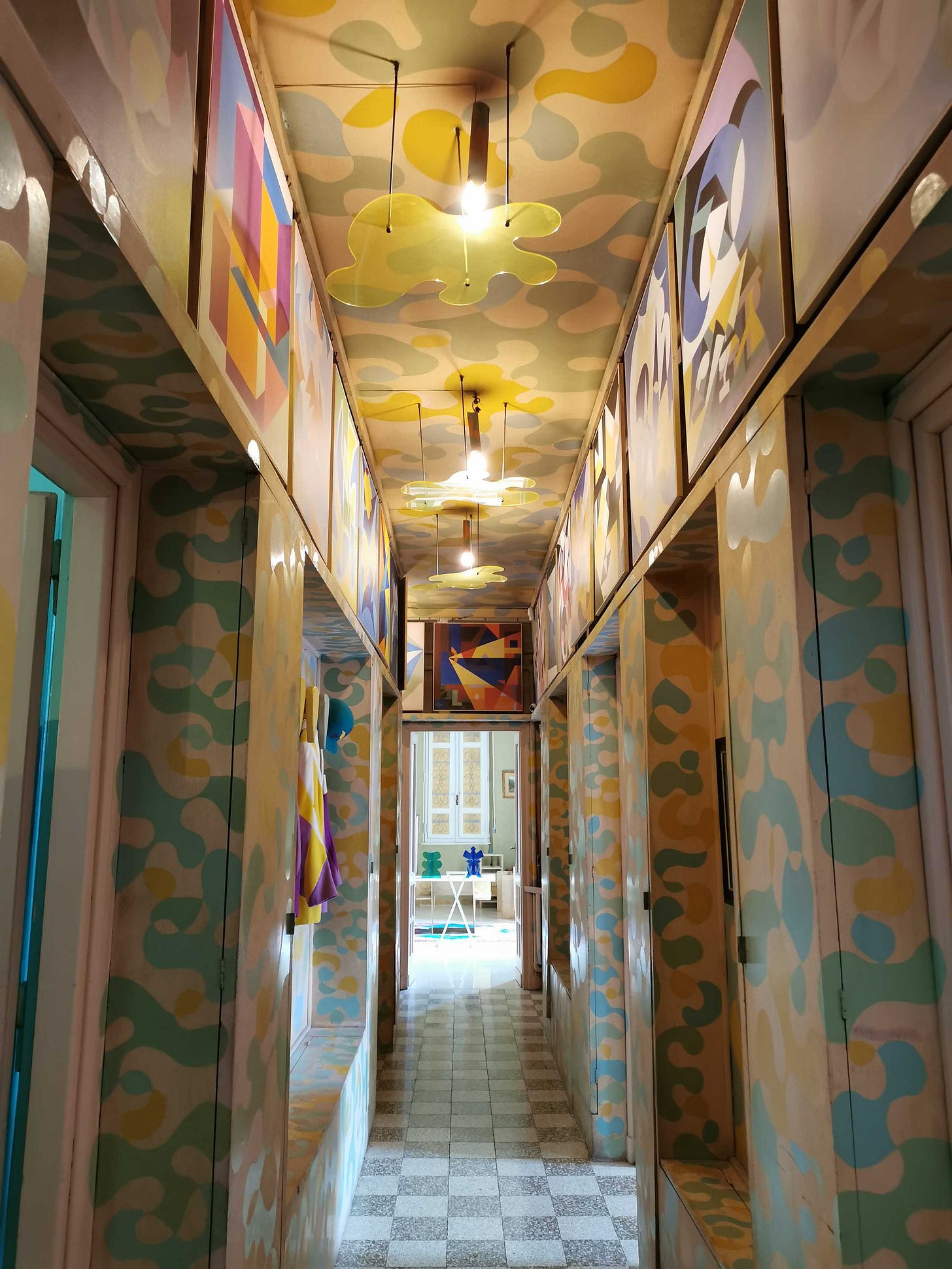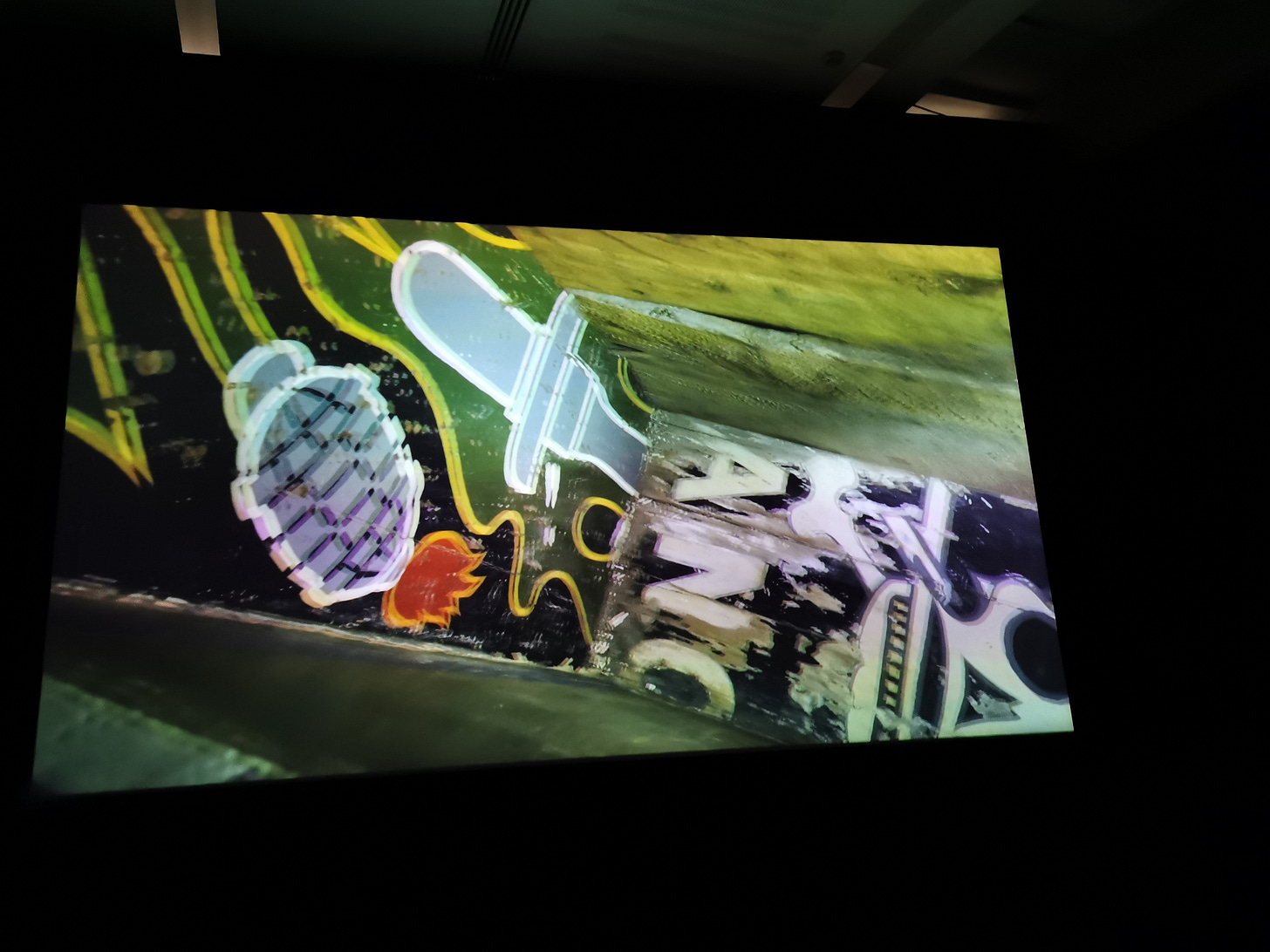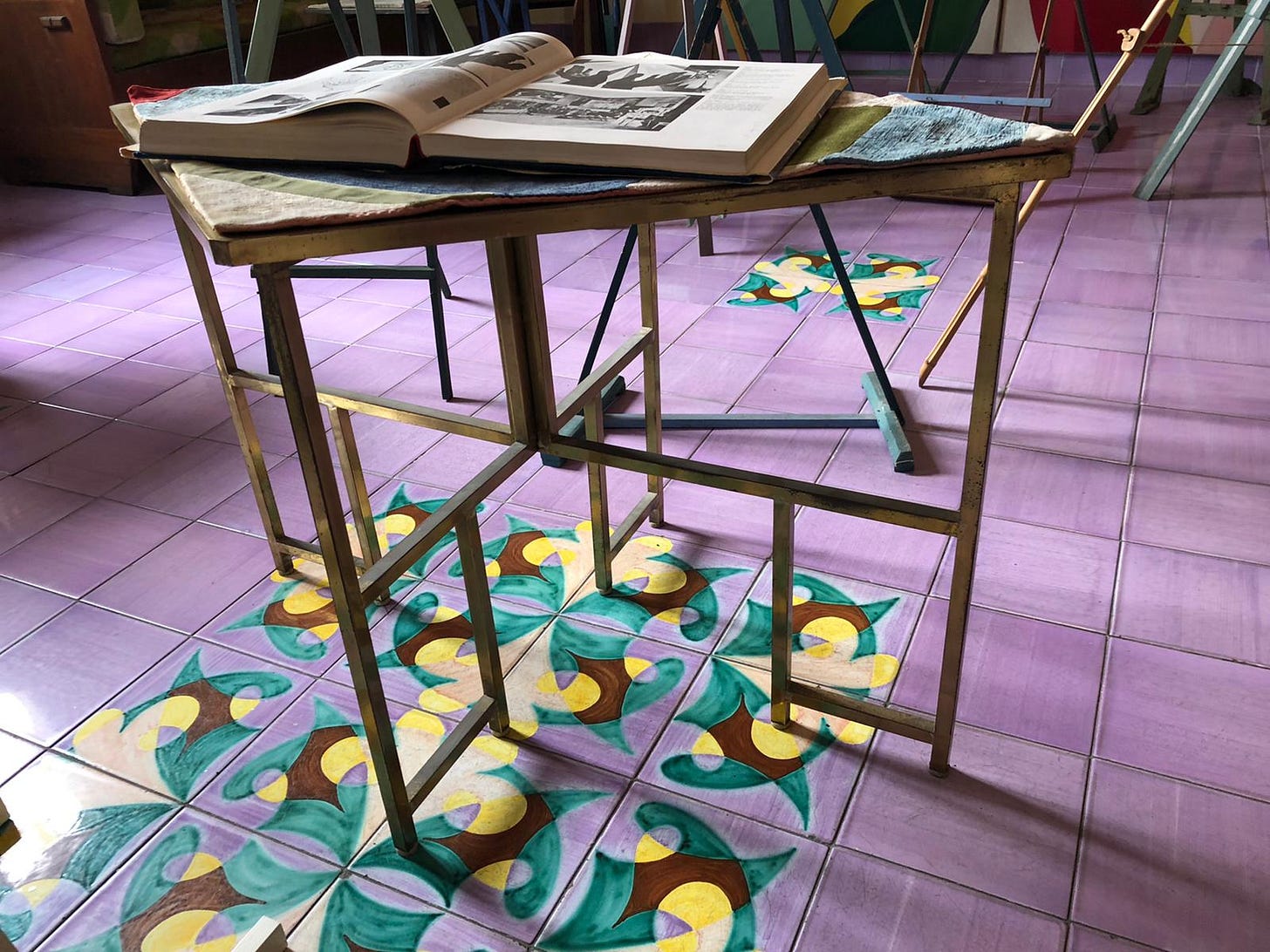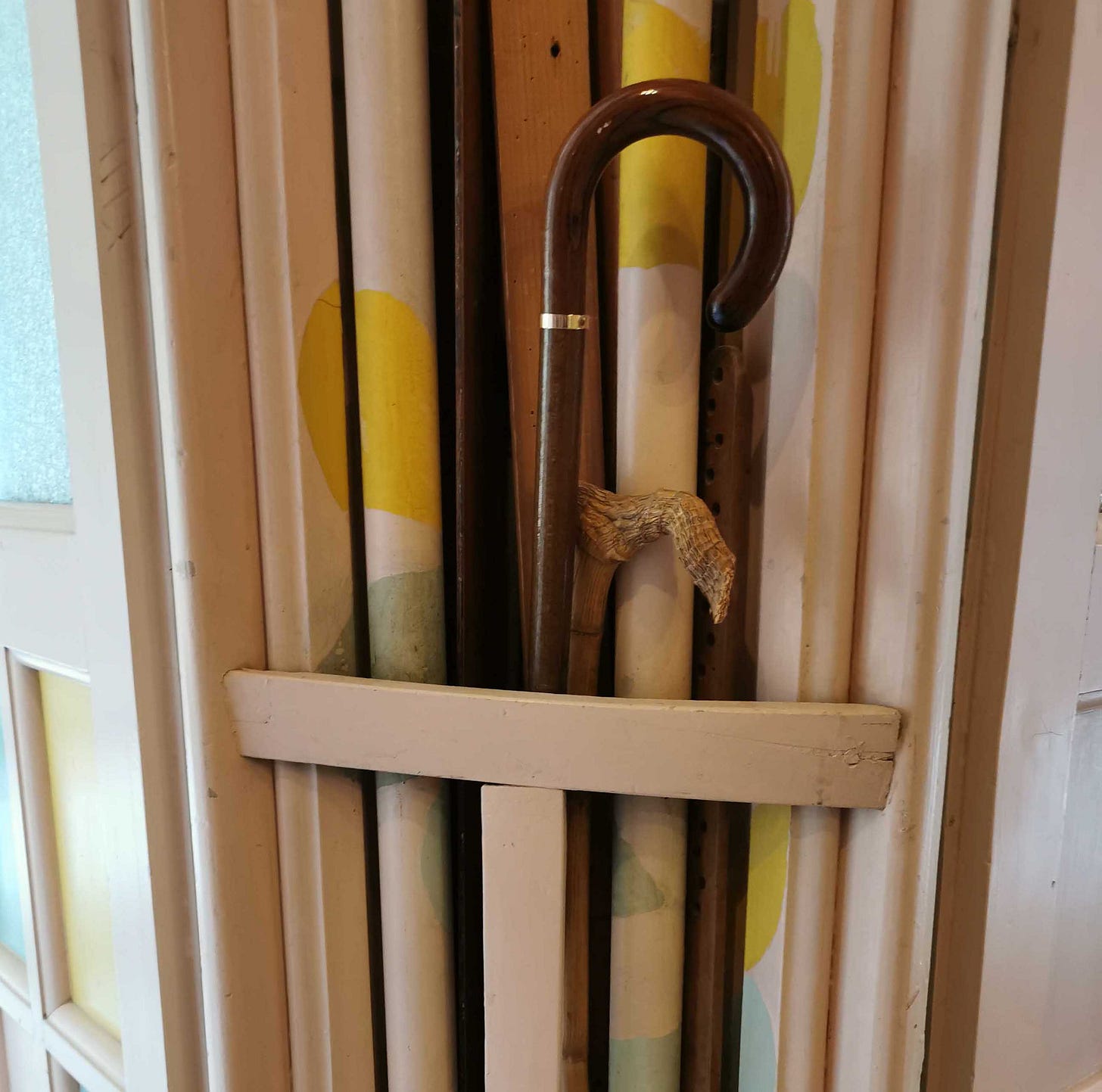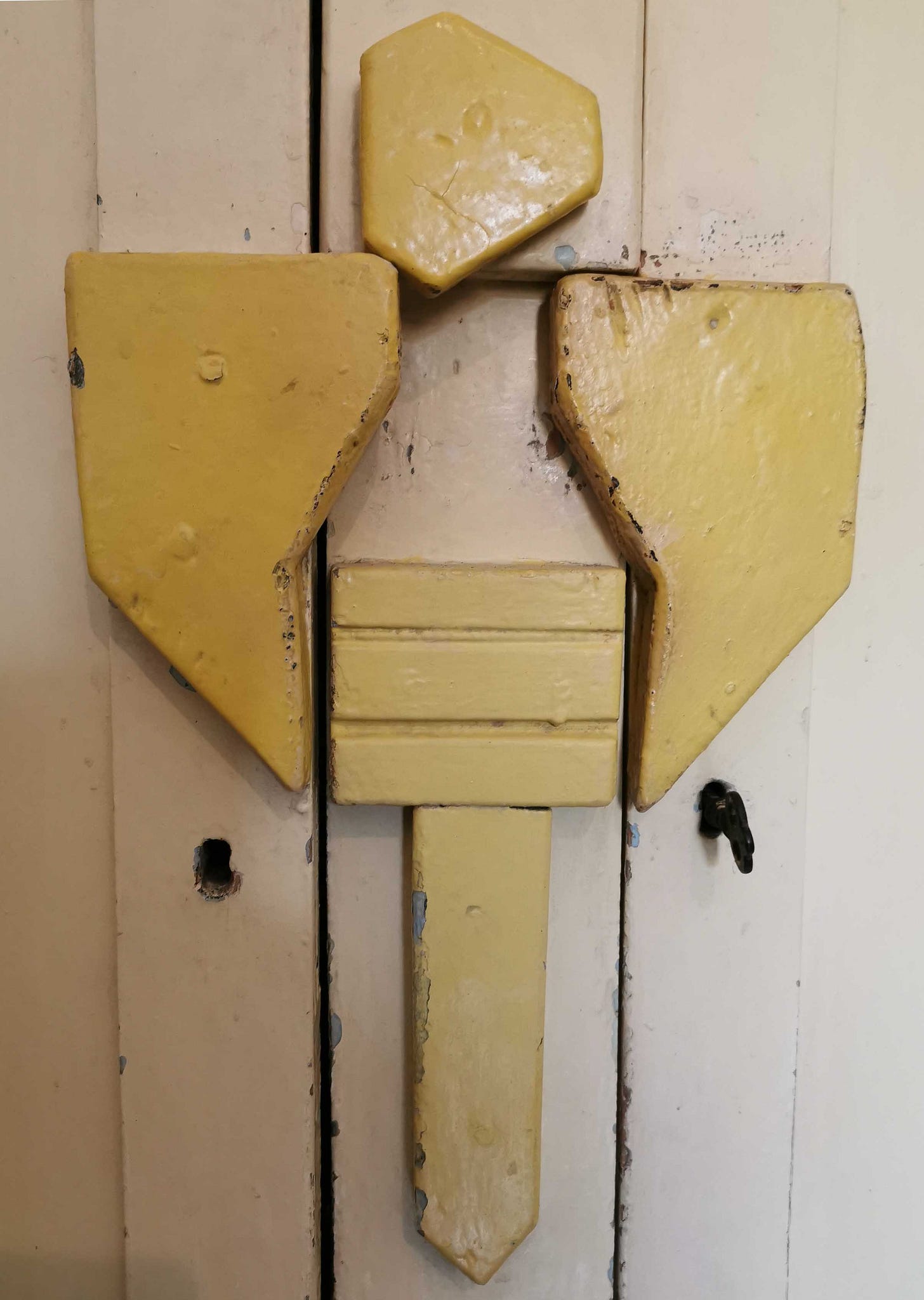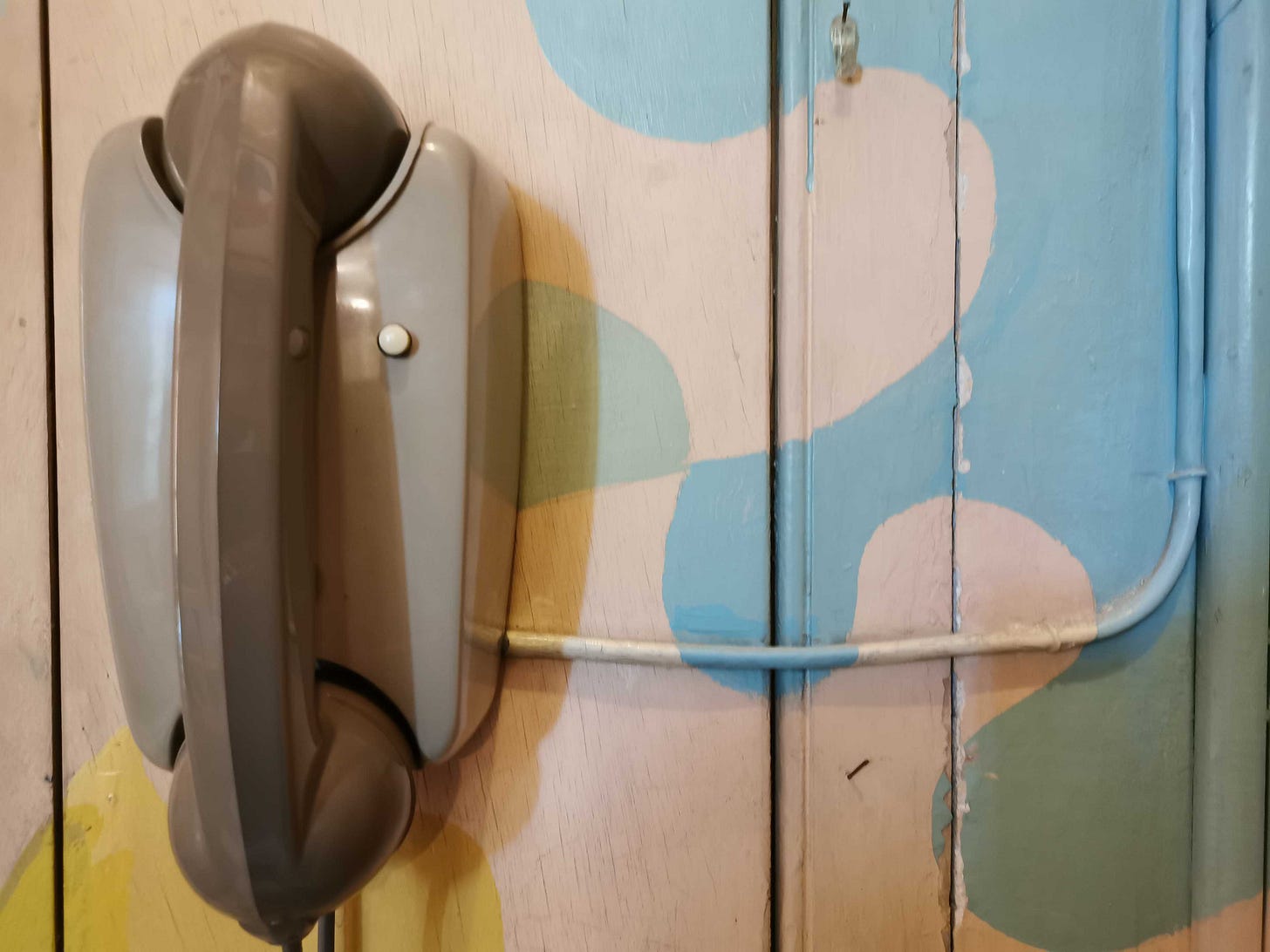Casa Balla. The forgotten House of Futurism.
Why a visit to a Futurist’s apartment in Rome still has you dancing around some politically charged issues while admiring the immersive experience.
Casa Balla, “anti-neutral” jacket and hat. Casa Balla Via Oslavia. Rome. Photo: PtL.
Tickets are all sold out for visits to Casa Balla, Giacomo Balla's full immersion Futurist apartment located in the Prati district of Rome. Giacomo Balla was a pioneering Futurist par excellence, he invented motion painting (see Dynamism of a Dog on a Leash 1912),designed what he termed “anti-neutral” mens’ clothing (1914), co-wrote the movement's second most critical manifesto- Futurist Reconstruction of the Universe (1915), performed onomatopoeic poetry and theater, and made Futurist furniture.
Casa Balla, Salotto- converted to easel room. Casa Balla Via Oslavia. Rome. Photo: PtL.
Balla's house gives an unusually intimate view inside the Futurist mind. And, unsurprisingly, Balla, like his Futurist peers, held more than a few skeletons in his closets. The Futurists were well known to Mussolini when he was a journalist living in Milan and writing for the socialist paper Avanti in the years leading up to World War I. Mussolini's break with international socialism was over Italian intervention in the war, and his turn towards hardline expansionist politics was cemented on this war footing. The first wave Futurists, enthusiastic destroyers of the past, saw war as the best means to this end. Many of the founding members were wholeheartedly drawn towards Mussolini's evolving Fascist experiment. Giacomo Balla would become closely allied to the Fascist movement. He would then have a change of heart. But more on that later.
Casa Balla, Aerofuturismo ceramic plate. Casa Balla Via Oslavia. Rome. Photo: PtL.
Balla and his family moved to Via Oslava no. 39, in 1929 and remodelled, or better put, totally transmorphed their home over the following decades. Giacomo Balla died in 1958, but his two daughters, Luce (Light) and Elica (Propeller) continued to live and alter their settings until they too passed away one after the other in the mid 1990s. The apartment remained closed until around 2004 when bits and pieces of the historic house re-emerged in the public eye, broadcast on Italian TV, and exhibited in museums. This year marked the first time Casa Balla opened its doors to the general public under the coordination and curatorship of the MAXXI museum.
Casa Balla, The Red Studio. Casa Balla Via Oslavia. Rome. Photo: PtL.
A guard at the building's entrance leads you into the apartment lobby, and you are asked to walk up the four flights of stairs. The elevator is reserved for the building's occupants. When you reach the 4th floor the guide directs you into the large living room, which is filled with easels and various paintings and sketches hanging on the walls. As you get accustomed to the space, you realise you are surrounded by portraits, painted diagrams, oil paintings and odd pieces of furniture. Stepping out into the corridor you are led towards the kitchen, passing the bathroom to one side.
Casa Balla, the painted tile bathroom. Could belong to your grandmother. Casa Balla Via Oslavia. Rome. Photo: PtL.
Built-in hand painted cabinets featuring exuberant shapes and colours span the length of the corridor, while Balla's paintings hover just under the ceiling masking electrical wires and plumbing pipes. The ceiling is also coated in Futurist colour patterns and hanging acrylic lights. The cabinets are made of inexpensive materials, and the painted surfaces show plenty of wear and tear. In real-estate terms, this would be a fixer-upper. For those of us who have waited months to get into this apartment, the minor discrepancies in no way ruin the holistic experience of being inside an authentic piece of art. Kitchen sink and all.
Casa Balla, corridor. Casa Balla Via Oslavia. Rome. Photo: PtL.
Opportunely, the renowned cinematic duo Bêka and Lemoine were handed the the keys to Casa Balla to film the apartment before it opened to the public, and they decided to handle it as if they are cave explorers entering the house for the first time. Their innovative approach is that they and their small group of fellow adventurers are moving through the rooms and corridors as if they had just discovered the prehistoric underground caverns at Lescaze… with strap-on head lamps and hands stretched out before them. Their short film, Oslava, the Cave of the Past Future (see link to the trailer here) reveals the tantalising painted interiors in a magical play of dark and light, making you feel like you are wandering through a sort of haunted futurist house.
Casa Balla : Bêka and Lemoin, film still from inside a built-in cabinet. Projected at the MAXXI. Rome.
And while you are not exactly bumping into skeletons, their film allows you to catch glimpses of what's inside the many built-in closets and cabinets, purposely hidden from public view. These include some disturbing reminders from Balla's politically problematic past. Giacomo Balla won many commissions through his association with the regime’s political elite. His fortunes began to wane when Mussolini conceived a third Roman Empire in 1932. Over the next decade the government turned more violent in its persecution of Italians (Jews, Roma peoples, homosexuals and political opponents among others) and more vicious in its conquest of North Africa (introducing scorched earth military tactics and ruinous populations transfers).
Casa Balla : Table, Salotto. Casa Balla Via Oslavia. Rome. Photo: K. Lampert
For many in the Italian avant-garde who benefited from Mussolini's patronage, this new era in Fascist imperialism meant a major shift towards a neo-classicist aesthetic. Effectively, the Futurist artists, along with many of their architect cohorts, had either to reinvent themselves or drop out of the scene. As abstraction fell out of fashion Balla produced "March on Rome” where he gave himself over figurative realism. Balla tried to conform, but he couldn’t hold to this tack for long.
Casa Balla: corner detail, showing plumbing pipes and walking sticks. Casa Balla Via Oslavia. Rome. Photo: PtL.
Balla was not one to throw his work away: the more caustic examples were re-used to construct some of the built-in cabinets or were simply put aside.
It’s not that dissimilar from how historic Italian Fascism has been treated in post-war Italy in general, unlike National Socialism in Germany, or to some extent collaborationism in France. There were no massive purges in Italian society, no great public reckonings. All over Rome signs from Italy's Fascist past remain present and mostly unmediated. “And so it goes,” as a favourite author of mine, Kurt Vonnegut, would often say.
Casa Balla: kitchen cabinet door lock. Casa Balla Via Oslavia. Rome. Photo: PtL.
On this visit I was accompanying friends from Germany and one of their first reactions was on possible Bauhaus influences especially in the designs of the simple wood joined furniture. (Our guide pointed out Balla had been to Dusseldorf and possibly visited Peter Behrens while the German architect and industrial designer was working there). It was also brought up that the Balla furniture, cabinets and built-ins appeared to anticipate the 1980s design group Memphis, the exuberant and colourful style developed by the preeminent designer Ettore Sottsass Jr.
Casa Balla: Internal telephone. Casa Balla Via Oslavia. Rome. Photo: PtL.
The whole Balla experience wraps up at the Casa Balla exhibition in Zaha Hadid's upper cantilevered gallery in MAXXI where you can view the film by Bêka and Lemoine with its eerily Futurist inspired soundtrack. There is also an accompaniment of Balla objects, drawings, paintings and clothes on display, though seen outside the Balla house they are merely items floating in empty space. When I left the exhibition at MAXXI I couldn't help but wonder what we are supposed to be dreaming up now, in today's torpid and fragmented culture. What defines the house of our times? If the battlefront is to save our planet, are we still capable of coming to terms with a new kind of creative domesticity? In the face of adversity we are very capable of rising to the challenge, we should listen to Billie Eilish for encouragement, when she sings: “I am love with my future…"




